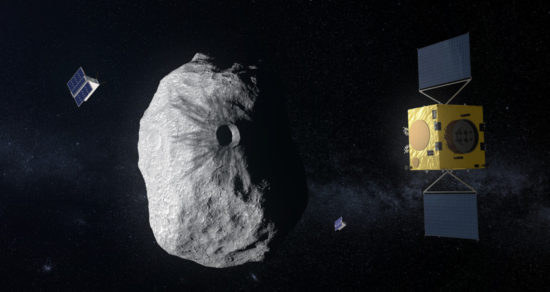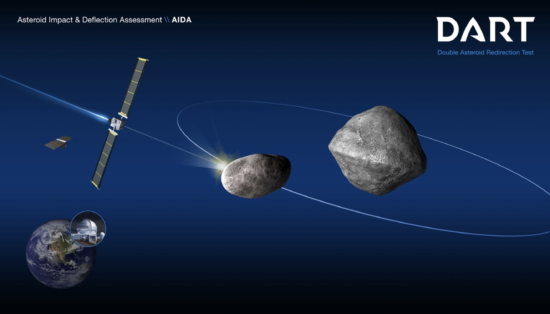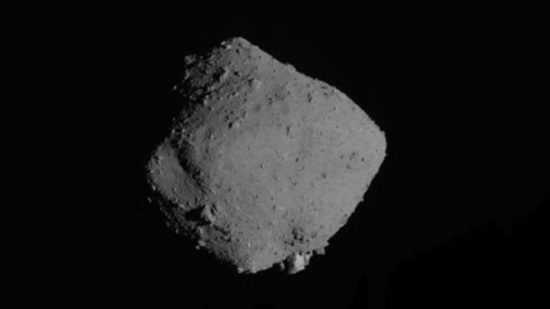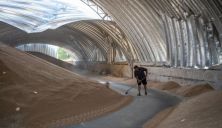
Photo ESA
Europe is joining NASA in conducting mankind’s first planetary defense experiment.
While they may seem like “far out” threats, an asteroid impact is nothing to be taken lightly. Just ask the dinosaurs, who are believed to have gone extinct some 66 million years ago following such an impact.
So in two years, NASA is planning to slam a spacecraft – DART (Double Asteroid Redirection Test) – into the double-asteroid Didymos – don’t worry, Didymos isn’t itself a threat – to see if it can manage to deflect a double-asteroid – that is, two space rocks traveling together.
After NASA sends DART, Europe will send its own mission – Hera – consisting of a couple of watchful satellites – to see how well NASA did or didn’t do at walloping the double-asteroid.
If all goes as planned, NASA will launch DART from Space X’s Falcon 9 rocket in July 2021. A little over a year later, in October 2022, DART will smash into Didymoon. Didymoon is the 165-meter satellite of the 775-meter asteroid, Didymos.

DART won’t be without eyes. Along with ground-based telescopes, the Italian Space Agency’s briefcase-sized LICIA (Light Italian Cubesat for Imaging of Asteroids) will travel with DART. It will separate at a safe distance from impact and observe.
Then, the European Space Agency will play its part.
It will send two more satellites to take more precise observations.
One of the cubesats is called APEX (Asteroid Prospection Explorer). It’s being provided by a Swedish-Finnish-Czech-German consortium and it will examine both Didymos’s and Didymoon’s interiors and surfaces. The second cubesat, Juventas, was built by the Danish company GomSpace and Romanian company GMV. It will study Didymoon’s structure and gravity.
“We are very pleased by the European Space Agency’s decision to fund the Hera mission, a critical part of humanity’s first attempt at deflecting an asteroid,” the #SupportHera campaign, which has been advocating for the mission, wrote in a statement. “One day, the Hera mission could be crucial to protecting our planet from asteroids.”
The ESA announced its decision last week at a gathering of European space leaders in Seville, Spain.
Knocking an asteroid off course isn’t the only possible means humanity has to stop an impact with Earth. Some other ideas that have been floated include “gravity tractors” – that is, a spacecraft that would fly along with an asteroid and use gravity to gradually tug it away – and blowing asteroids up using nuclear bombs.

Photo JAXA
In other asteroid news, JAXA (Japan’s Aerospace Exploration Agency), announced that having successfully tested its ion engines, its asteroid-sampling Hyabusa-2 spacecraft, begin its return to Earth on Tuesday (Dec.3). Hyabusa-2’s sample of the asteroid Ryugu is likely to arrive planetside in December 2020.












